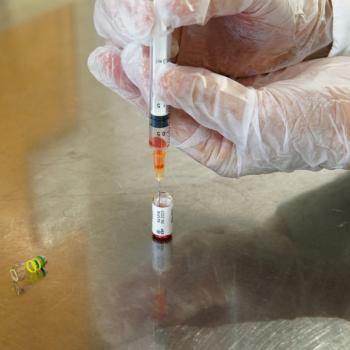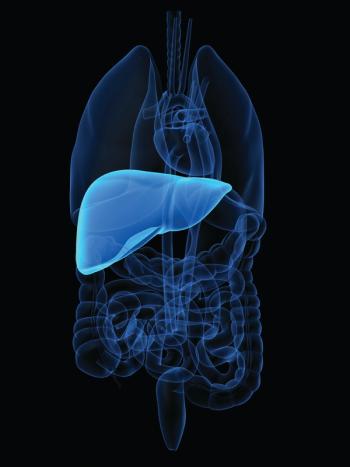
PFS Benefit Observed With Tislelizumab Plus Chemotherapy for Advanced Squamous NSCLC
Patients with stage IIIB and stage IV advanced squamous non–small cell lung cancer experienced a clinically significant improvement in progression-free survival with tislelizumab plus chemotherapy in the first-line setting compared with standard of care chemotherapy.
Patients with stage IIIB and stage IV advanced squamous non–small cell lung cancer (NSCLC) experienced a clinically significant improvement in progression-free survival (PFS) with tislelizumab plus chemotherapy in the first-line setting compared with standard of care chemotherapy, according to data from subgroup analyses of the phase 3 RATIONALE 307 trial (NCT03594747).1
Patients were randomized 1:1:1 to tislelizumab plus paclitaxel (arm A), tislelizumab plus nab-paclitaxel (Abraxane) and carboplatin (arm B), or paclitaxel plus carboplatin (arm C).
Findings showed that PFS was numerically longer with the humanized, monoclonal antibody in arms A and B vs arm C for both patient populations. Specifically, for those with stage IIIB disease, the median PFS for arm A (n = 38) was 9.8 months (95% CI, 6.0-not estimable [NE]) vs 5.6 months (95% CI, 4.2-7.4) in arm C (n = 44; HR, 0.402; 95% CI, 0.215-0.750); the median PFS was 11.0 months (95% CI, 7.6-NE) in arm B (n = 40; HR, 0.372; 95% CI, 0.202-0.686).
For patients with stage IV disease, the median PFS for arm A (n = 82) was 7.6 months (95% CI, 5.6-7.8]) vs 5.2 months (95% CI, 4.2-5.6) in arm C (n = 77; HR, 0.570; 95% CI, 0.376-0.862); the median PFS was 7.4 months (95% CI, 5.6-9.9) in arm B (n = 79; HR, 0.537; 95% CI, 0.350-0.824).
“Lung cancer survival rates are lower when diagnosed at advanced disease stages,” wrote Shun Lu, MD, PhD, professor at Shanghai Chest Hospital, Jiao Tong University, and chief of Shanghai Lung Cancer Center in China, in a poster of the data presented at the 2021 World Conference on Lung Cancer. “Therefore, it is important to compare the efficacy and safety of immunotherapy amongst patients with advanced disease.”
Tislelizumab in combination with chemotherapy was approved by the China National Medical Products Administration in January 2021 as a first-line therapy for patients with advanced squamous NSCLC. This is the third approval in China for tislelizumab, and its first in a lung cancer indication.2
The multicenter, randomized, open-label RATIONALE 307 study enrolled adults in China with treatment-naïve histologically confirmed locally advanced or metastatic (stage IIIB or IV) squamous NSCLC not amenable to surgery or not suitable for chemoradiation. Individuals needed to have an ECOG performance score of 0 or 1 and at least 1 measurable lesion. Stratification factors were disease stage (IIIB vs IV) and PD-L1 expression (< 1% vs 1%-49% vs ≥ 50% tumor cells). The primary end point was PFS.
Patients randomized to arm A received tislelizumab (200 mg) plus paclitaxel (175 mg/m2) and carboplatin area under the curve (AUC) 5 once every 3 weeks on day 1. Those in arm B received tislelizumab (200 mg) and carboplatin AUC 5onceevery 3 weeks on day 1 plus nab-paclitaxel (100 mg/m2) every 3 weeks on days 1, 8, and 15. Patients designated to arm C were given paclitaxel (175 mg/m2) plus carboplatin once every 3 weeks on day 1. The triplet regimen was administered in arms A and B for 4 to 6 cycles, followed by tislelizumab maintenance therapy until disease progression, intolerable toxicity, or treatment discontinuation. Crossover from arm C to tislelizumab maintenance was allowed upon disease progression. All treatments were administered intravenously.
Baseline patient characteristics were well balanced between all arms, regardless of stratification. The median age was 61 year (range 34-74) and a majority of patients (≥ 70% in all arms) had an ECOG performance status of 1.
At data cutoff December 6, 2019, the median follow-up time was 9.3, 8.8, and 9.1 months in arms A, B, and C, respectively, for patients with stage IIIB disease, and 8.3, 8.6, and 7.7 months for those with stage IV disease, respectively.1
Analysis was reported for the secondary end point of objective response rate (ORR), which was higher in arms A and B compared with arm C regardless of disease stage.
For patients with stage IIB disease, the ORR in arm A was 84.2% (95% CI, 68.7%-94.0%), 82.5% (67.2%-92.7%) in arm B, and 59.1% (43.2%-73.7%) in arm C. Partial responses accounted for a majority of responses at 78.9%, 75.0%, and 56.8%, in arms A, B, and C, respectively; complete responses were reported in 2 (5.8%), 3 (7.5%), and 1 patient (2.3%), respectively. The ORR difference in arms A and B vs arm C were 25.3% (95% CI, 6.43%-44.18%) and 23.4% (95% CI, 4.23%-42.55%), respectively.
The median duration of response (DOR) was NE in arm A (95% CI, 5.03-NE) vs 4.0 months (95% CI, 2.66-5.59) in arm C (HR, 0.274; 95% CI, 0.127-0.590). In arm B, the median DOR was 9.7 months (95% CI, 4.67-NE) vs arm C (HR, 0.344; 95% CI, 0.162-0.729).
For patients with stage IV disease, the ORR in arm A was 67.1% (95% CI, 55.8%-77.1%), 70.9% (95% CI, 59.6%-80.6%) in arm B, and 44.2% (95% CI, 32.8-55.9%) in arm C. Complete responses were reported for 3 patients (3.7%) in arm A with partial responses reported for the remaining 63.4% of responders. All responses in arms B and C were partial responses. The ORR difference in arms A and B vs arm C were 23.0% (95% CI, 7.99%-37.92%) and 26.4% (95% CI, 11.62%-41.26%), respectively.
The DOR was 6.9 in arm A (95% CI, 3.65-NE) vs 4.2 months (95% CI, 2.83-5.72) in arm C (HR, 0.622; 95% CI, 0.343-1.126). In arm B, the median DOR was 8.6 months (95% CI, 4.80-NE) vs arm C (HR, 0.530; 95% CI, 0.290-0.969).
Regarding safety, most patients experienced at least 1 treatment-related adverse event (TRAE), with 33 (86.8%), 34 (84%), and 34 (79.1%) patients with stage IIIB disease in arms A, B, and C, respectively, experiencing a grade 3 or higher TRAE; incidence of grade 3 or higher TRAEs were 85.4%, 83.3%, and 81.1%, respectively, for patients with stage IV disease.
The commonly occurring (≥ 20%) TRAEs were: anemia, decreased neutrophil count, alopecia, decreased white blood cell count, leukopenia, neutropenia, thrombocytopenia, increased alanine aminotransferase, decreased appetite, and increased aspartate aminotransferase. Of these, anemia was the most reported TRAE across all arms, at 81.6%, 92.5%, and 83.7% in arms A, B, and C, for the stage IIB cohort, respectively, and 82.9%, 85.9%, and 68.9% in the stage IV cohort.
For those patients who discontinued tislelizumab plus chemotherapy only the primary reasons were progressive disease (23.7% in arm A and 25.0% in arm B) and voluntary withdrawal (13.2% in arm A and 5.0% in arm B) for those in the stage IIB cohort compared with progressive disease (28.0% in arm A and 22.8% in arm B) and adverse effects (11.0% in arm A and 10.1% in arm B) in the stage IV cohort.
Five patients in each arm of the stage IIIB cohort (13.2%, 12.5%, 11.4%, respectively) discontinued from the study. The primary reason for treatment discontinuation was death (10.5%, n = 4; 7.5%, n = 3; 9.1%, n = 3, respectively). Eighteen (22.0%), 16 (20.3%), and 27 (35.1%) patients with stage IV disease discontinued from the study.
References
- Lu, S, Yu X, Wang J, et al. RATIONALE 307: a subgroup analysis of tislelizumab plus chemotherapy vs chemotherapy alone as first-line treatment for stage IIIB advance squamous NSCLC. Presented at: 2021 World Conference on Lung Cancer; September 8-14, 2021. Abstract P17.02.
- China National Medical Products Administration approves tislelizumab in combination with chemotherapy in first-line advanced non-small cell lung cancer. News release. BeiGene; January 13, 2021. Accessed September 8, 2021. bit.ly/3ySXUq7
Newsletter
Stay up to date on recent advances in the multidisciplinary approach to cancer.



















































































